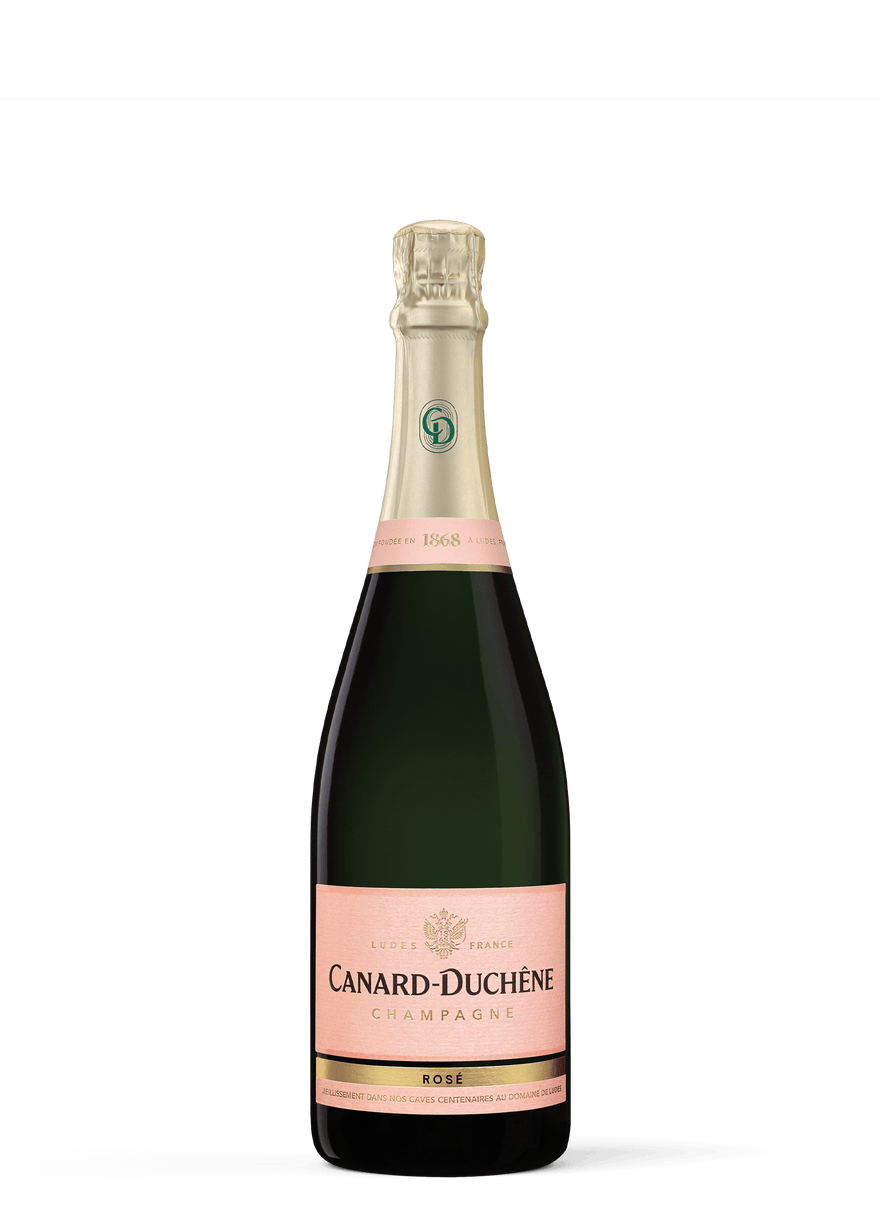Rosé Champagne stands out for its elegant color and expressive fruit profile. Highly sought after for celebratory moments - such as weddings or ceremonies - it also shines at the table, enhancing a wide range of food pairings. Different production methods impart a diverse aromatic palette, making each Rosé Champagne unique.
Types of Rosé Champagne: Definition & Characteristics
There are two primary types of Rosé Champagne:
- Rosé d’Assemblage (Blended Rosé Champagne)
This is the most common method. Rosé d’Assemblage is produced by adding a proportion of red
wine from Champagne (typically 5–20%) to the final blend.
This technique allows for precise control over color and aromatic profile, ensuring consistency in each cuvée. Rosé d’Assemblage is known for its freshness, lightness, and vibrant fruit notes (strawberries, raspberries, cherries) with a refined acidity. It represents the majority of Rosé
Champagnes available on the market today.
- Rosé de Saignée (Maceration Rosé Champagne)
A rarer and more traditional technique, Rosé de Saignée (or Maceration Rosé) is crafted by allowing the black grape skins (Pinot Noir and/or Meunier) to macerate with the juice for a short period.
This natural extraction process enhances both the color and aromatic intensity of the wine, resulting in a more structured, complex, and deeply colored Rosé Champagne. It is often richer on the palate, offering deeper red fruit flavors and greater aging potential.
How to Choose the Perfect Rosé Champagne?
To select the ideal Rosé Champagne, consider the following:
A higher proportion of Pinot Noir and/or Meunier enhances roundness and fruitiness.
A blend incorporating Chardonnay brings finesse and freshness.
The blended method produces a lighter, fruit-forward style.
The maceration method results in a richer, more expressive champagne.
- Champagne House Signature:
Each Champagne House has its distinctive style. At Canard-Duchêne, we craft Rosé Champagnes that embody freshness, fruit purity, and perfect balance.
Rosé Champagne at Canard-Duchêne
At Canard-Duchêne, we employ both winemaking methods to offer two distinct Rosé Champagnes with unique personalities:
Rosé Essentiel – A Rosé d’Assemblage, elegantly blending Pinot Noir, Meunier, and Chardonnay. This refined cuvée reveals gourmet red fruit notes, striking a perfect balance between freshness and fruitiness, reflecting the house’s signature style.
Rosé Iconic – A Rosé de Saignée, expressive and captivating. Its deep color and aromatic intensity stem from the careful maceration of Pinot Noir grapes, delivering a vibrant profile with crisp, elegant red fruit flavors. Designed for gastronomy, this exceptional champagne pairs beautifully with refined dishes.
How to Enjoy Rosé Champagne?
Rosé Champagne is best enjoyed at a serving temperature of 8 to 10°C (46–50°F).
It pairs exquisitely with:
- Salmon and seafood dishes
- Fresh red berries and fruit-based desserts
- Soft cheeses like Brie and Chaource
Aging & Storage: Can Rosé Champagne Be Aged?
Non-vintage Rosé Champagnes are crafted for immediate enjoyment but can be cellared for 2–3 years (sometimes up to 5 years) in optimal conditions: away from light, at a stable temperature of 10–15°C (50–59°F).
Vintage Rosé Champagnes have greater aging potential and can evolve beautifully over 10 years or more, developing enhanced complexity and depth.
Conclusion: The Elegance of Rosé Champagne
Rosé Champagne is a refined and versatile expression of Champagne’s artistry, offering a broad spectrum of flavors shaped by different winemaking techniques. Whether as an aperitif or a gastronomic companion, it always brings a touch of elegance and indulgence to any occasion.





